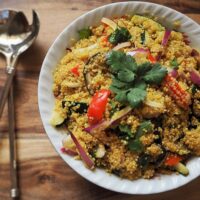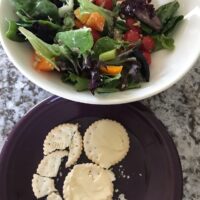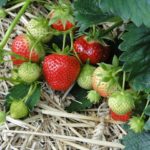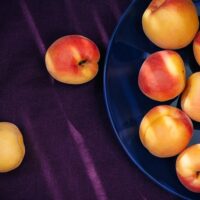A Simple Celebration Salad
Happy Independence Day and the kick-off to summer!
Since there will probably be a few picnics and family gatherings happening at some point, I thought you’d enjoy a simple, tasty, and (don’t tell Mr. Non-Compliant) healthy salad.
This quinoa salad is great for hot weather events because there are no ingredients that will easily spoil. Also, you can make it ahead of time and the flavors will blend.
One cup of cooked quinoa (pronounced KEEN-wah) has about 8 grams of protein and is a good source of fiber. It has a crunchy texture, nutty flavor and is gluten-free.
Quinoa is a complete protein source, which means that it provides all nine of the essential amino acids our bodies need. These are the amino acids that we cannot make and that must be acquired through diet. 
It is a good source of antioxidants and minerals, providing more magnesium, iron, fiber, and zinc than many common grains.
While I don’t care for warm quinoa on its own, I do like it in a cold salad with vegetables and a simple dressing. The first time I made quinoa I treated it like rice and decided that there must be a tastier way to enjoy it.
There are scads of variations for quinoa salad. Experiment to your heart’s content and have fun.
Quinoa Tabbouleh Salad
- 1 cup organic quinoa
- 2 cups water
- 1 cup peeled and diced cucumber
- 1 cup cherry tomatoes, halved
- 1 cup chopped fresh parsley
- ¼ cup crumbled feta or goat cheese
- ¼ cup kalamata or black olives, chopped
- 1 Tablespoonful chopped mint (optional)
- ¼ cup extra-virgin olive oil
- Juice of 1 fresh lemon
- Salt and ground black pepper to taste
Prepare quinoa according to package instructions. Let cool. Combine quinoa, cucumbers, cherry tomatoes, parsley, cheese, olives, and mint in a large bowl. Whisk olive oil, lemon juice, salt and pepper together. Pour over quinoa mixture and toss to coat. Serve immediately or chill in refrigerator.
Serve as a side salad or add grilled chicken to make it a main dish for lunch. This is also tasty as a topper for tortilla chips. (I like Late July brand chips.)
I wish you and your family a safe and happy holiday weekend. 
Much love,
Carol
“Sure I wave the American flag. Do you know a better flag to wave? Sure I love my country with all her faults. I’m not ashamed of that, never have been, never will be.”—John Wayne








